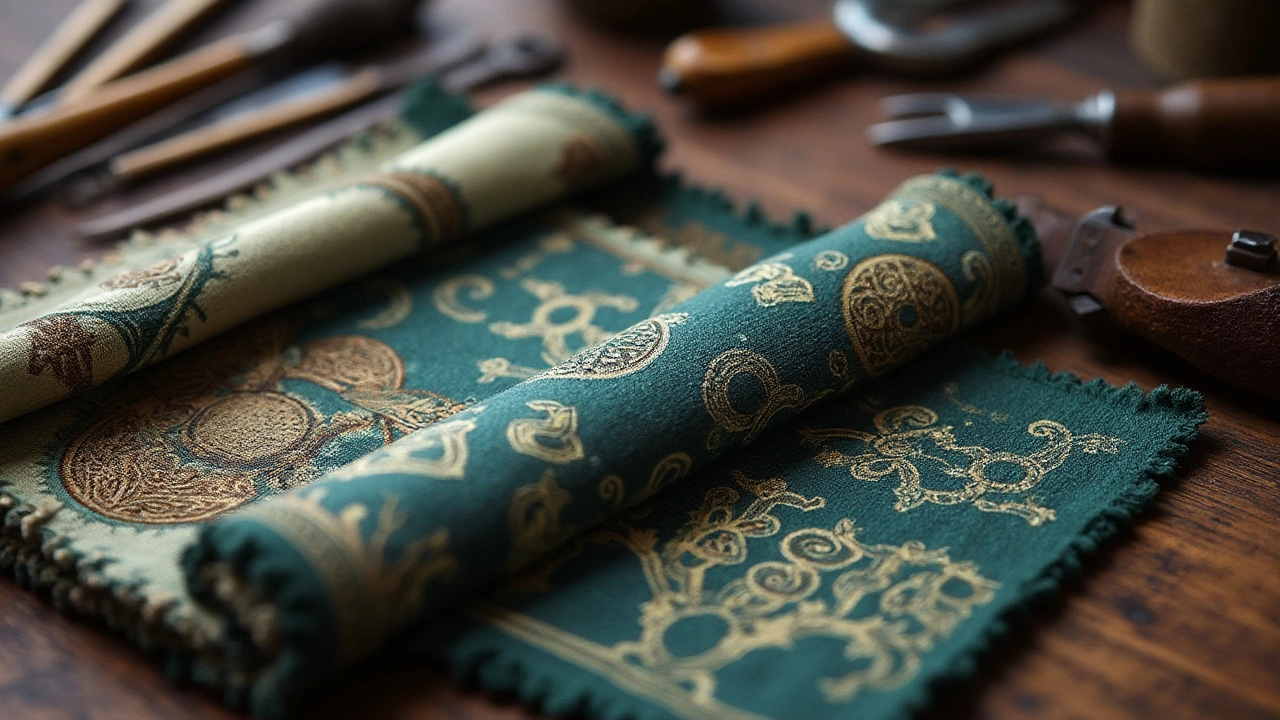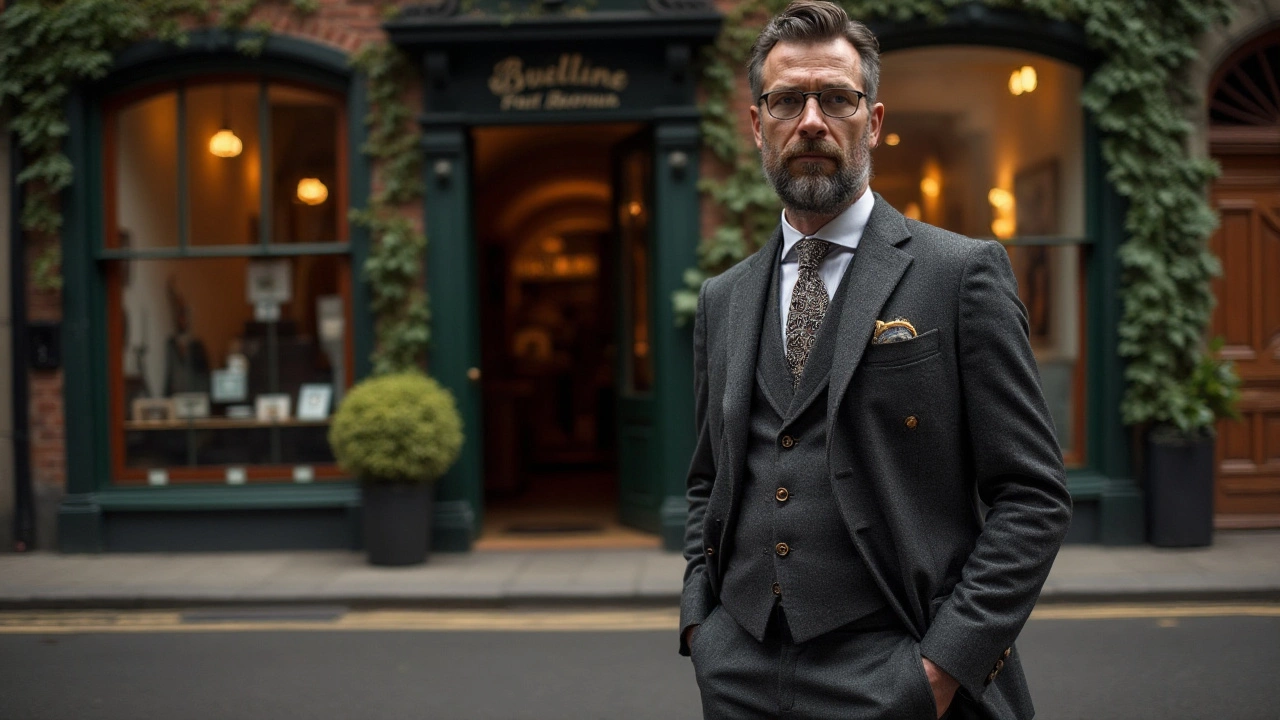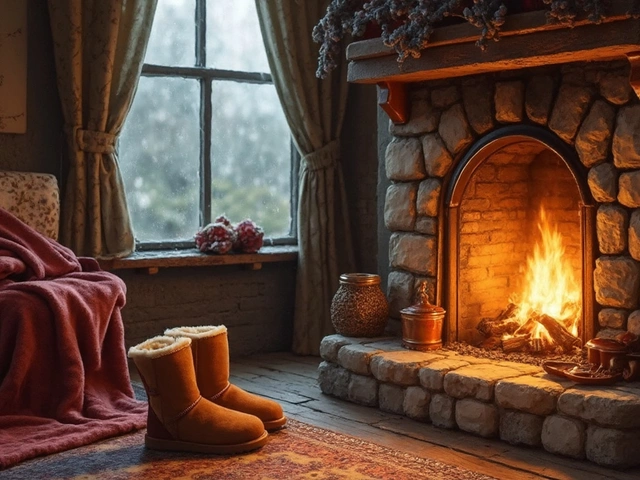Wearing a suit with style and sophistication is a staple in men's fashion, especially within Ireland's fashion-conscious society. However, making sure your suit projects an air of luxury requires more than a hefty price tag—it demands an understanding of fit, fabric, and those small yet pivotal details.
In Ireland, where local sensibilities and international trends blend seamlessly, dressing in a suit is as much an art as it is a science. From choosing the right fabric to understanding the intricacies of tailoring, looking sharp never goes out of style. In this guide, we'll explore how you can make a suit appear more expensive without breaking the bank, focusing on the tastes and traditions that are unique to the Irish style landscape.
- Understanding Irish Fabric Preferences
- The Importance of Tailoring
- Choosing the Right Fit
- Accessorizing for an Expensive Look
- Where to Shop for Suits in Ireland
Understanding Irish Fabric Preferences
In the heart of Irish fashion, the choice of fabric is the unsung hero that can dramatically influence the elegance and durability of a suit. This isn't a detail to overlook, especially in Ireland, where the weather can be as unpredictable as it is charming. Traditionally, Irish fashion places a premium on high-quality, resilient materials, particularly due to the island's temperamental climate. Tweeds and wools are cornerstones, celebrated for their warmth, durability, and texture, making them perfect allies against the chill that often brushes through Dublin’s streets.
Wool, especially, has been favored not merely for its warmth but also for its breathability and comfort, adding an artisanal touch that many Irish tailors swear by. In recent years, Irish mills have become innovative, blending traditional designs with eco-friendly fabrics, reflecting a growing global consciousness about sustainability. It’s not unusual to find modern suits in Dublin’s finest boutiques, made from organic wool or recycled fibers, skillfully crafted to echo the traditional Irish sartorial charm. This thoughtful approach ensures that whether you attend a business meeting in Galway or a wedding in Limerick, your suit will hold its sophisticated allure.
Another noteworthy mention is the distinct appeal of linen during Ireland’s milder months. Although not the first choice for a winter wedding, linen’s breezy texture becomes ideal in the softer seasons, echoing the light-heartedness of an Irish summer. Local suiting experts often blend linen with other fibers, creating a fabric that maintains body while resisting wrinkles, a necessity for maintaining a pristine visage throughout your day. Consider consulting with tailors like those at Dublin’s Root and Branch, who offer bespoke services tailoring exactly to these climate considerations.
Patrick O'Malley, a distinguished bespoke tailor based in Cork, once remarked, "A suit is the armor of modern identity, with the fabric as its shield."
The influence of traditional Irish fabrics extends to colors and patterns as well, with muted tones and subtle checks often reflecting the lush, muted landscapes of Ireland itself. Colors like heather grey, forest green, and muted blues are not uncommon, resonating with the local ethos of simplicity merged with elegance. When shopping for a suit, keep an eye out for these color palettes to ensure your ensemble resonates well with the Irish eye for style while standing out in your social ventures.
The Importance of Tailoring
In Ireland, where the weather is eternally unpredictable and local styles are often a charming mix of the traditional and the contemporary, the importance of tailoring cannot be overstated. Whether you're striding through Dublin's busy Grafton Street or attending a wedding in the picturesque countryside of Kerry, a well-tailored suit makes all the difference. It's not just about looking sharp; it's about feeling confident and presenting your best self in every situation. Irish men have always had an appreciation for suits that boast impeccable craftsmanship, aligning with Ireland's rich tradition of bespoke tailoring.
The first step in understanding tailoring is recognising that off-the-rack suits often fall short in terms of fit. The shoulders might be too wide, or the sleeves too long, a problem all too familiar to many Irish men who attempt to navigate the world of fashion without guidance. Tailoring acts as the remedy to these pitfalls, transforming a generic suit into one that aligns with your body’s unique shape. In the words of Savile Row’s legendary tailor, Sir Hardy Amies,
"A man should look as if he had bought his clothes with intelligence, put them on with care, and then forgotten all about them."
Another key factor is the fabric choice which should be aligned with the Irish climate and occasion. For instance, a heavy tweed suit, a nod to Ireland's textile traditions, may speak volumes about style and practicality during winter. For a summer look, a lighter wool or linen fabric balances comfort with elegance. Tailors in cities like Cork and Limerick understand the nuances of local climate conditions and deliver styles that are both functional and sophisticated. A tailored suit comprises more than just the jacket and trousers; waistcoats can also be adjusted to create a harmonious ensemble. Customizing your size and fit allows you to express confidence subtly, creating an impression of luxury and meticulous care.
Tailoring does not stop at adjusting the measurements; it's an art that encapsulates the individual's style. By choosing your preferred details – whether it's the width of the lapel, the number of buttons, or the type of pockets – tailoring becomes a statement of personal identity. Such personalization elevates your attire and contrasts nicely against the often drab mass-produced garments. In Ireland, where personal expression and local culture meet with distinguished tailoring heritage, the influence of a finely tailored suit is profound. It’s why more men are seeking bespoke services not just for formal events, but for everyday wear that channels a personal touch of excellence.

Choosing the Right Fit
Finding the perfect fit for your suit is akin to crafting a masterpiece in the world of men's suits. In Ireland, where weather and fashion converge, the fit of your suit needs not only to exude style but also to accommodate comfort and practicality. Traditionally, suits offer two main styles to consider: classic and slim fit. The classic fit provides a bit more room, making it ideal for layering during Ireland's cooler months, while the slim fit offers a more contemporary, streamlined silhouette. Understanding these differences is crucial when deciding between the traditional Irish rugged look versus a modern sleek appeal.
One cannot undervalue the art of tailoring, particularly in Ireland where bespoke services are revered. A well-tailored suit will smooth over imperfections, highlighting your physique in ways an off-the-rack suit cannot. Tailors from Dublin to Galway have long been respected for their attention to detail, often suggesting slight adjustments in the jacket's shoulders, the taper of the trousers, or the length of sleeves to ensure that the suit fits as impeccably as possible. As one local tailor from Cork once said,
"A suit is much like a second skin, its worth truly felt when it feels like part of your own body."This attention to detail separates an average suit from an exquisite one.
When assessing the fit, consider the shoulder line—a critical component of a suit. The seams of the suit jacket should lie precisely on the edge of your shoulders without any gaping or pulling. Moreover, the jacket should effortlessly hug your torso rather than buckle or bag at the buttons. For trousers, the fit at the waist should be snug but not constrictive, allowing for a little finger space. Craftsmanship here often involves adjusting the rise, giving you options for higher or lower placements to match both comfort and style preferences seen across Irish suiting trends.
For those prioritizing comfort, a medium break in the trousers is often recommended, giving a nod to traditional Irish attire. This means a slight fold is visible where the fabric meets your shoe, blending classic tailoring practices with comfort. However, if modernity is a guiding principle in your wardrobe, opting for a no-break, where the trousers touch only the top of the shoe, can create an edgier appearance. Some fashion-forward individuals in Ireland choose to add a subtle flair with colorful or patterned socks, a nod to personalized style that turns heads within the constraints of corporate environments.
Investing in a suit is as much about the emotional resonance as the visual impact. In Ireland, where craftsmanship and cultural heritage weave through the fabric of life—literally and metaphorically—the right fit speaks volumes about one’s pride and identity. Moreover, choosing the right fit doesn't merely rely on physical dimensions; it involves the context of your outfit. Whether it’s an interview for a bustling tech start-up in Dublin or a chic evening in Belfast, the situational awareness of how a suit fits relative to an occasion enhances your command of style.
Accessorizing for an Expensive Look
When striving to look expensive in a suit, the right accessories can transform your ensemble from ordinary to extraordinary. In Ireland, where fashion meets tradition, accessories play a crucial role in the fine art of suiting up. Begin by considering the fine intricacies of lapel pins and cufflinks—these small details can add a level of sophistication that elevates the entire outfit. Opt for materials like silver or gold, which have timeless appeal and effortlessly match the allure of tailored suits. Including subtle Celtic motifs or designs can also nod respectfully to local craftsmanship while staying within the realm of high fashion.
No Irish ensemble is complete without the proper neckwear. A high-quality silk tie in a classic solid color or a traditional Irish pattern such as tartan or paisley can add that touch of opulence. Silk ties have long been synonymous with luxury and offer a tactile elegance that cheaper fabrics fail to replicate. Ensure that your tie knot resonates with your collar type; a full Windsor is preferable for more formal settings.
"The right tie can articulate not only your outfit but your personality," advises renowned Irish stylist Patrick Fagan.
Now let’s talk about timepieces: a sturdy yet sophisticated watch can punctuate your look. Leather-strapped watches often convey a classic, expensive aura, and in Ireland, brands like Eoin Ó Conaill have captured this balance perfectly. Investing in a watch is like investing in a piece of art—a connection of form and function that's both utilitarian and stylish. Consider choosing one with a face that isn’t too cluttered to maintain an air of reserved sophistication, a principle which aligns with Irish design ethos.
Another crucial element is footwear. A suit's worth can be defined by the shoes accompanying it. Leather shoes, meticulously shined, speak volumes in terms of style and affluence. In Galway, for instance, shoe boutiques are pioneering in blending traditional craftsmanship with modern aesthetics. When choosing leather footwear, the boldness of oxford shoes should not be underestimated; they’re a quintessentially stylish component that demonstrates dedication to the craft of suiting.
Finally, consider adding a pocket square to your suit. Once considered an accessory of the elite, pocket squares are now an accessible way to add visual interest with color or patterns. In Ireland, you might even encounter pocket squares crafted from unique fabric blends derived from local wool, showcasing a beautiful merge of culture and couture. Here’s a simple selection method: ensure the color contrasts enough with your tie to stand out but doesn’t clash jarringly, maintaining that delicate balance of elegance.
The secret to accessorizing like an expert lies in the details, an undertone not just observed in fashion but deeply rooted in the Irish way of life. Each choice, from cufflinks to shoes, contributes to a composed, expensive look, reflecting personal style while honoring the rich heritage of Irish fashion.

Where to Shop for Suits in Ireland
Finding the perfect men's suits in Ireland offers a thrilling journey through a rich tapestry of tradition and modern fashion flair. Ireland, known for its meticulous craftsmanship, presents a multitude of destinations where the dapper gentleman can find a suit that feels bespoke. One of the top destinations is Dublin, a city that harbors both high-end boutiques and renowned tailors. On Grafton Street, vintage elegance meets contemporary style, and you're bound to stumble upon historic shops offering tailored Irish fashion with wool sourced right from the countryside’s lush pastures. Every piece tells a story, embedded with cultural nuances that reflect Ireland's timeless style.
Besides Dublin, don't miss the stylish offerings in Cork. Home to many family-run businesses, Cork is steeped in traditional tailoring techniques passed down through generations. These shops often emphasize personalized service, ensuring every stitch and seam aligns perfectly with the customer's frame. Visitors often find that the journey to Cork not only furnishes them with exquisite attire but also an education in the art of proper tailoring. Additionally, Cork's emerging designers have begun integrating modern twists into traditional styles, ushering in a blend of old and new that captivates the fashion world. As one Cork-based fashion columnist once remarked, "A suit from Cork isn't just about looking good; it’s about feeling part of a legacy."
Limerick adds another dimension to the shopping experience with its dynamic fashion scene. Here, shoppers can find a variety of luxury attire options that range from classic British-style tailoring to contemporary European trends. Many Limerick boutiques carry suits with detailed craftsmanship, offering custom fittings that highlight the precision and care synonymous with Irish tailoring. These shops cater to a discerning clientele, ensuring an impeccable match of design and decorum. For a truly unique piece, consider visiting the local markets, where independent tailors showcase breathtaking, one-of-a-kind creations.
For those seeking local talents with a global perspective, Galway’s aspiring designers are turning heads with their innovative approaches. Galway is a haven for sartorial experimentation, offering a landscape rich with bespoke options that suit both traditionalists and those inclined towards avant-garde fashion. The boutiques here are celebrated for their attentive service and meticulous attention to detail, targeting clients who appreciate the environment as much as the latest trends. Supporting Galway markets often means endorsing ethical fashion, with garments crafted from sustainably sourced materials, proving that style can also be eco-friendly.
When considering where to shop in Ireland for suits, it's beneficial to explore the Irish market with not only aesthetic criteria but also an appreciation for the narrative each suit offers. The textile industry’s effects on local economies can be profound, which is why supporting these storied brands also aids in preserving Ireland’s rich fashion history. Consider checking out smaller towns and villages, where off-the-beaten-path tailors might surprise you with their skill and the unique personality infused into each creation. No matter where you are in Ireland, the search for an outstanding suit promises an abundance of inspiration, weaving together tradition, innovation, and a sense of belonging within each thread.






Write a comment